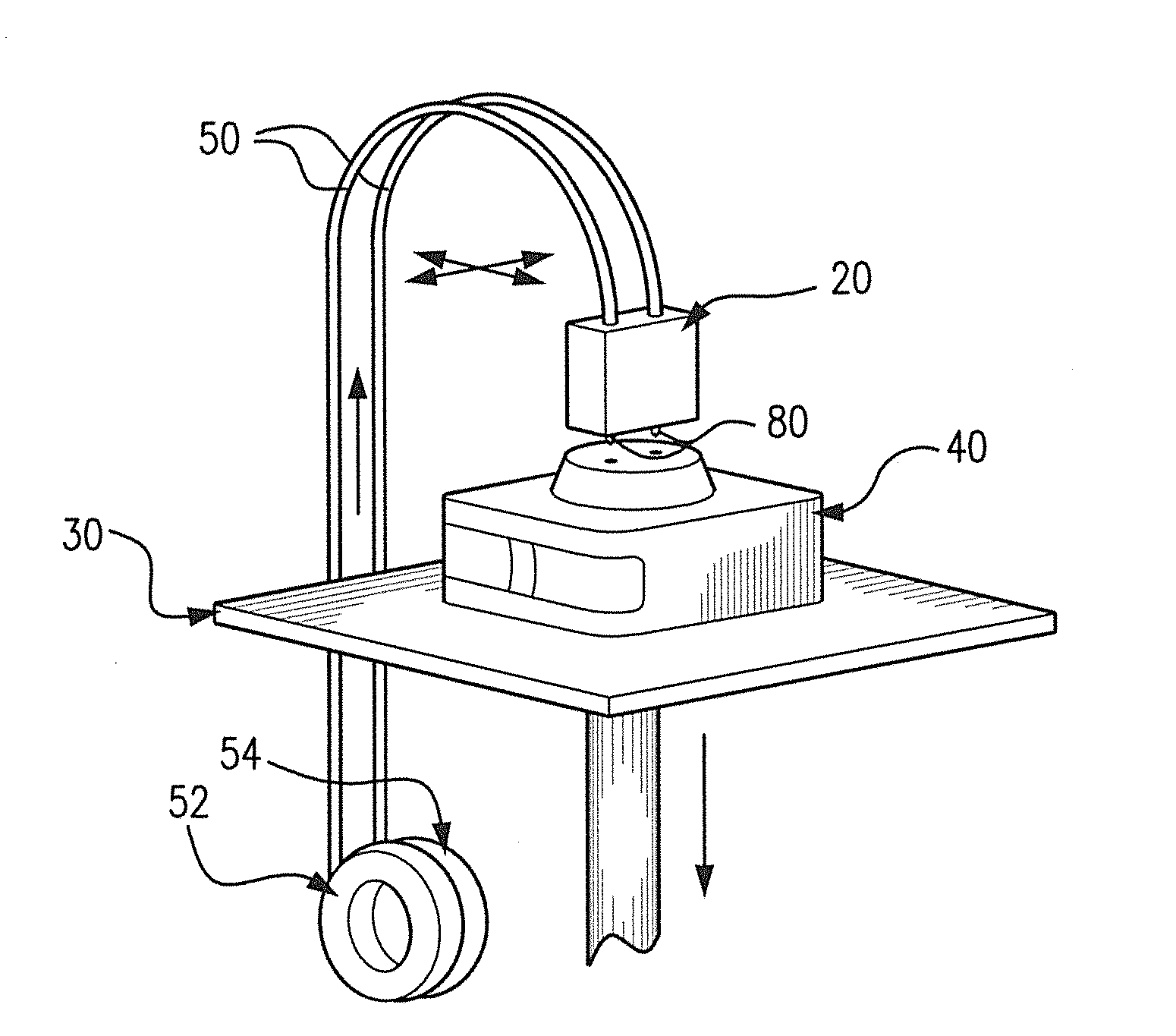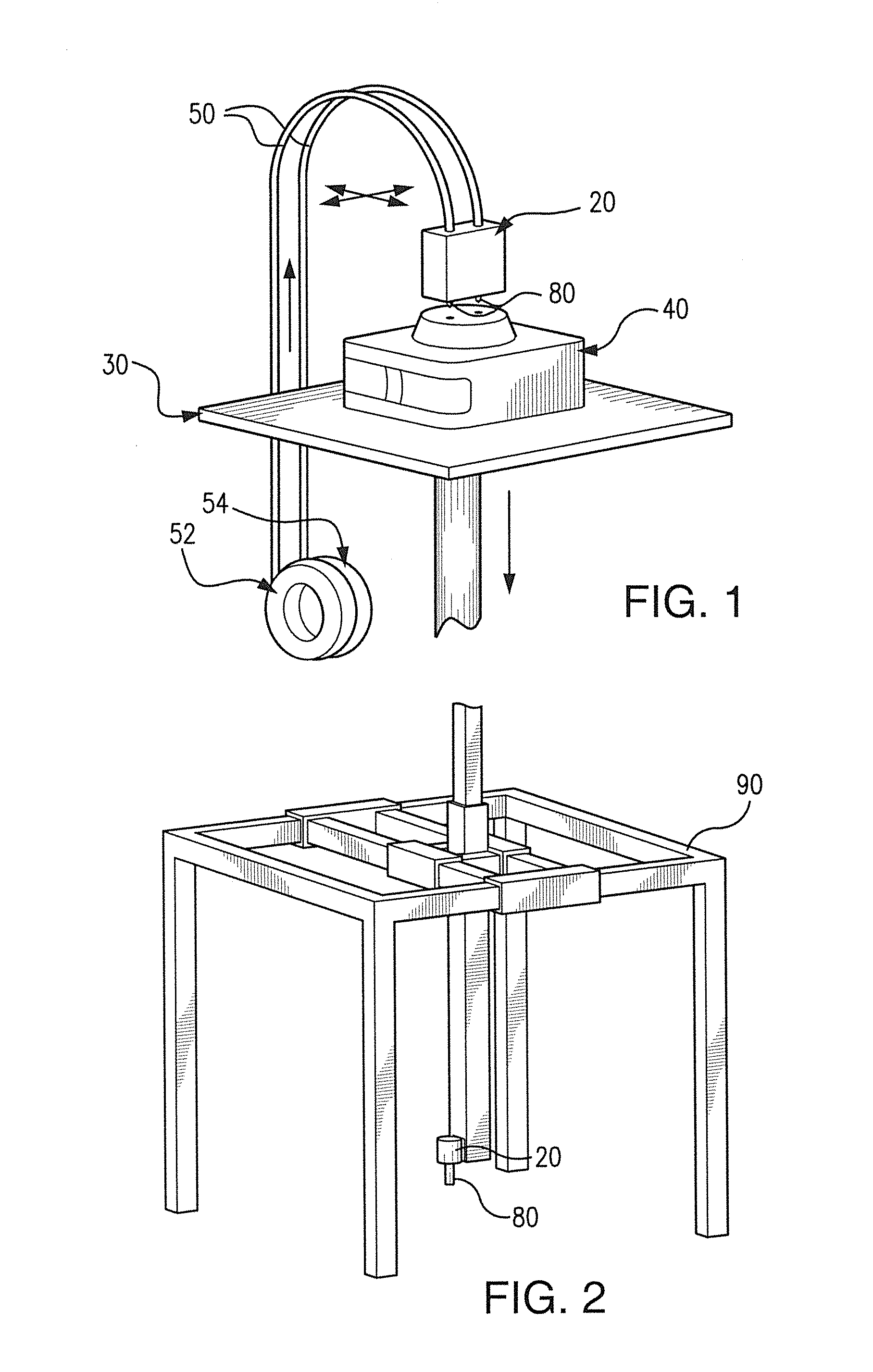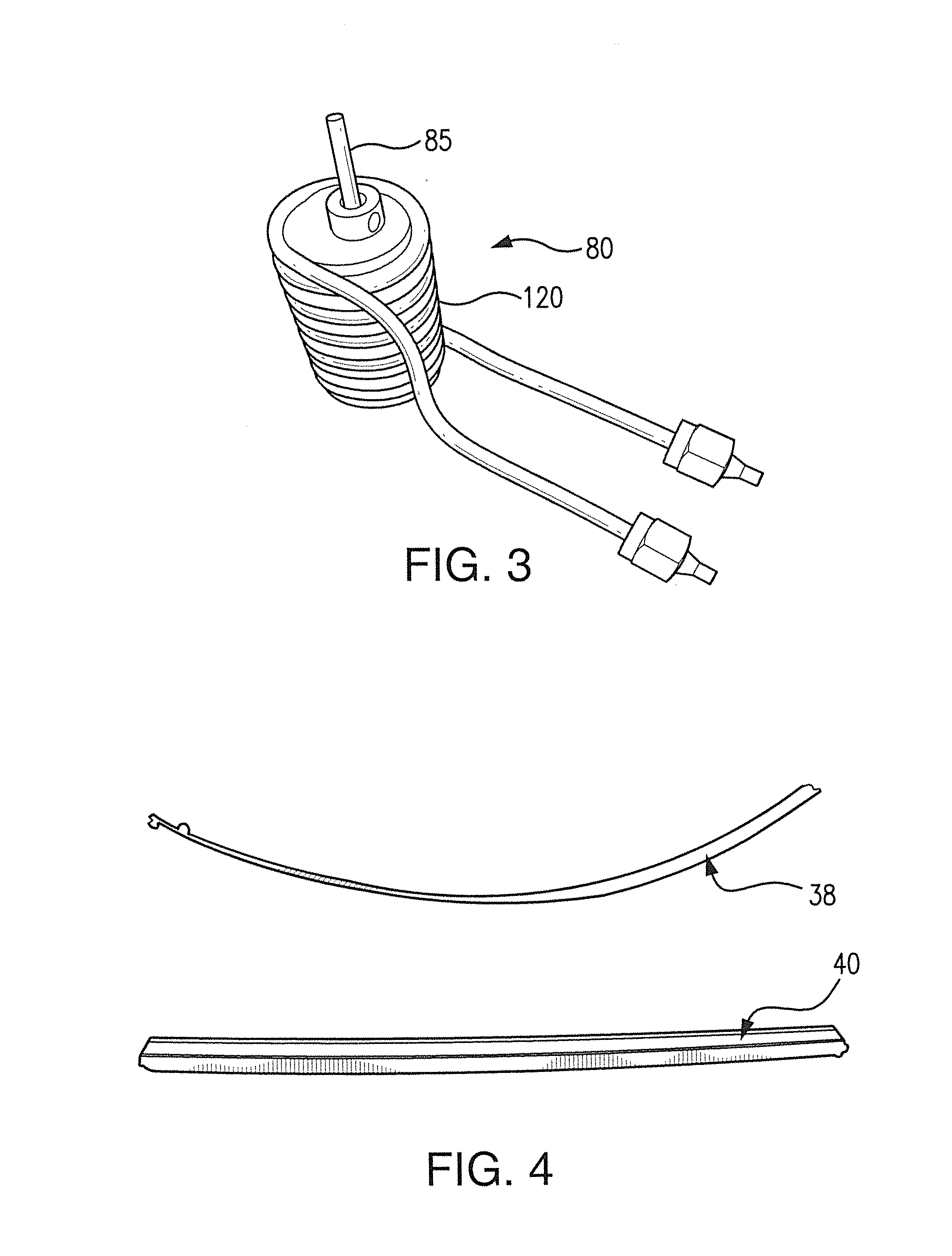Large scale room temperature polymer advanced manufacturing
a room temperature polymer and advanced manufacturing technology, applied in the direction of additive manufacturing processes, manufacturing tools, transportation and packaging, etc., can solve the problems of increasing the cost of raw materials, so as to improve the production rate and component scale, the effect of increasing strength
- Summary
- Abstract
- Description
- Claims
- Application Information
AI Technical Summary
Benefits of technology
Problems solved by technology
Method used
Image
Examples
Embodiment Construction
[0019]The present invention provides a component manufactured using an advanced manufacturing process wherein a supply of working material including a carbon-fiber reinforced polymer is provided to a deposition system. The working material is then deposited in a desired position through a nozzle during a build of the component. The build occurs at atmospheric temperature and outside of the confines or limitations of an oven, heated bed or similar system.
[0020]Conventional polymer extrusion systems feed a polymer filament into a liquefier to extrude a material, such as shown in FIG. 1. As shown a conventional polymer extrusion system uses a moveable print head 20 positioned with respect to a work surface 30 to create a desired work piece, component, or part 40. As shown in FIG. 1, a filament 50 may be fed through the print head 20 using drive wheels or a similar mechanism to draw the filament 50 through a heating element 70 to liquefy and extrude the feed material through a nozzle 80...
PUM
| Property | Measurement | Unit |
|---|---|---|
| atmospheric temperature | aaaaa | aaaaa |
| atmospheric temperature | aaaaa | aaaaa |
| temperature | aaaaa | aaaaa |
Abstract
Description
Claims
Application Information
 Login to View More
Login to View More - R&D
- Intellectual Property
- Life Sciences
- Materials
- Tech Scout
- Unparalleled Data Quality
- Higher Quality Content
- 60% Fewer Hallucinations
Browse by: Latest US Patents, China's latest patents, Technical Efficacy Thesaurus, Application Domain, Technology Topic, Popular Technical Reports.
© 2025 PatSnap. All rights reserved.Legal|Privacy policy|Modern Slavery Act Transparency Statement|Sitemap|About US| Contact US: help@patsnap.com



